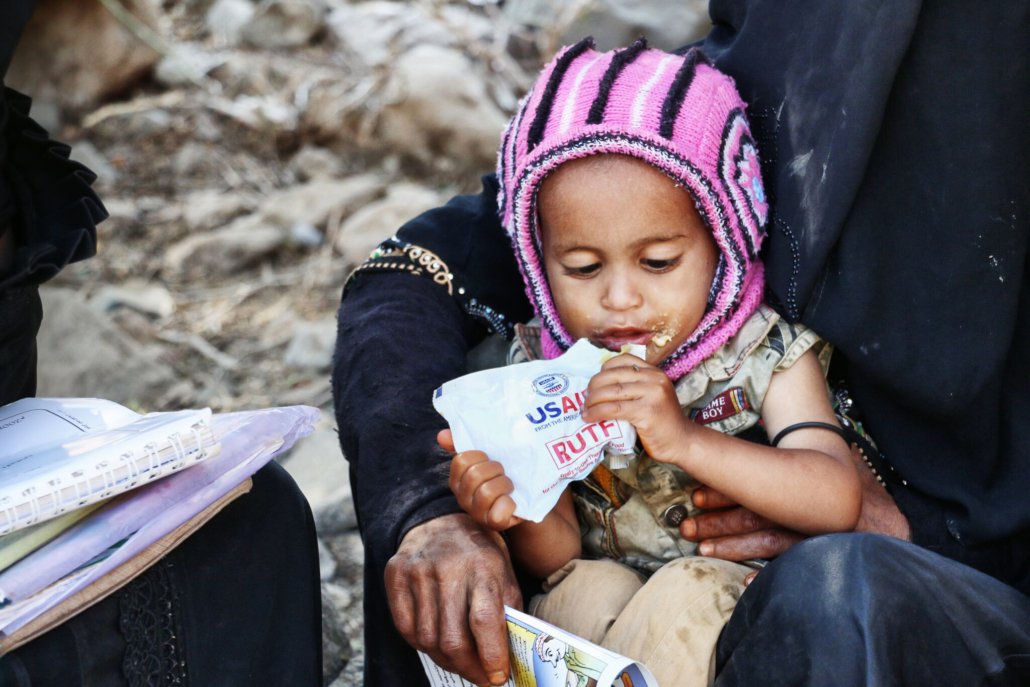Hunger in Yemen: The Current State

The devastation of the Yemeni Civil War is a widely-known tragedy. The mounting casualties and damage to Yemen’s supporting infrastructures continue to put the lives of Yemeni civilians in jeopardy. Another devastating effect, however, is increased food security and hunger in Yemen. According to estimates in 2018, there were 20.2 million people in Yemen who faced a critical food shortage.
The Yemeni Civil War
Hunger in Yemen has its root in the Yemeni Civil war, which is entering its fifth year in 2020. What makes the Yemeni Civil war notable is the sheer amount of civilian casualties it has caused. Both the Saudi and Emirati-led coalition (SELC) and the Houthis seem to carry out artillery strikes and airstrikes with little regard to civilian casualties.
According to the International Rescue Committee’s 2019 report, an estimated 100,000 civilians died from the current conflict, 42 of whom were aid workers. The numerous air and artillery bombardment from the SELC and Houthi insurgency further add to the suffering of Yemeni civilians. In addition, explosive weaponry hit over 500 civilian homes in only July of 2019. These airstrikes and artillery bombardments threaten Yemeni civilians’ well-being when they directly target the agricultural sectors.
Starvation as a War Tactic
On top of their attack jets and precision munitions, SELC is using starvation as a weapon against the Houthis. Additionally, multiple reports suggest that airstrikes in Yemen are sometimes intentionally aimed at civilian agricultural sectors. The targets of these airstrikes include farms, fishing boats and factories that supply food and basic-goods to the civilians of Yemen. According to the Yemeni Ministry of Agriculture, there were at least 10,000 SELC airstrikes that struck farms and 800 that struck local food markets. In addition, there were 450 airstrikes that hit silos and other food storage facilities.
In addition, the SELC imposed its blockade of Yemeni airports, seaports and land ports since November of 2017. This blocked out 500,000 metric tons of food and fuel, and 1,476 metric tons of foreign aid. As a result, this worsens the condition of hunger in Yemen because Yemen already imports about 70 percent of their food.
Malnourishment in Yemen
These factors all contribute to the current humanitarian crisis in Yemen. By 2017, two years after the escalation of the conflict, an estimated 21.7 million people needed humanitarian assistance. Yemeni children are especially in danger of malnutrition. UNICEF’s 2017 estimate reported that nearly 2.2 million Yemeni children were acutely malnourished. There are a variety of negative consequences of malnourishment, including decreased immunity to diseases and impediments to physical development.
The call to end conflict and hunger in Yemen is certainly loud. In 2019, an article from the Independent stated that if the current conflict lasts for another 5 years, it will cost the international community an estimated $29 billion in humanitarian funding to the country. Moreover, there are signs that an end to the conflict is close. In October 2019, the Houthi offered to stop aiming missile and drone attacks at Saudi Arabia if the SELC would do the same. In addition, both SELC and the Houthi agreed to a nationwide ceasefire due to the current COVID-19 outbreak.
Organizations Fighting Hunger in Yemen
Many international organizations are working to alleviate hunger in Yemen. Action Against Hunger helps the malnourished in Yemen through its comprehensive health programs. The organization has reached 224,651 people with their nutrition and health programs, as well as 395,534 with their sanitation and hygiene programs and 102,666 with their food security and livelihood programs.
UNICEF is also working hard to treat child malnourishment. In 2016, UNICEF reported that they had treated 215,000 children suffering from severe acute malnutrition. Additionally, they provided vitamin supplements to more than 4 million children in Yemen.
Hunger in Yemen is one of the most significant humanitarian crises of our time. The Yemeni Civil War is the primary cause of this crisis, and continued fighting will only exacerbate the suffering of Yemeni citizens. However, the work being done by humanitarian organizations to alleviate hunger is having a real impact. These efforts, in addition to continued efforts toward peace, are crucial to decreasing hunger in Yemen.
– YongJin Yi
Photo: Flickr
